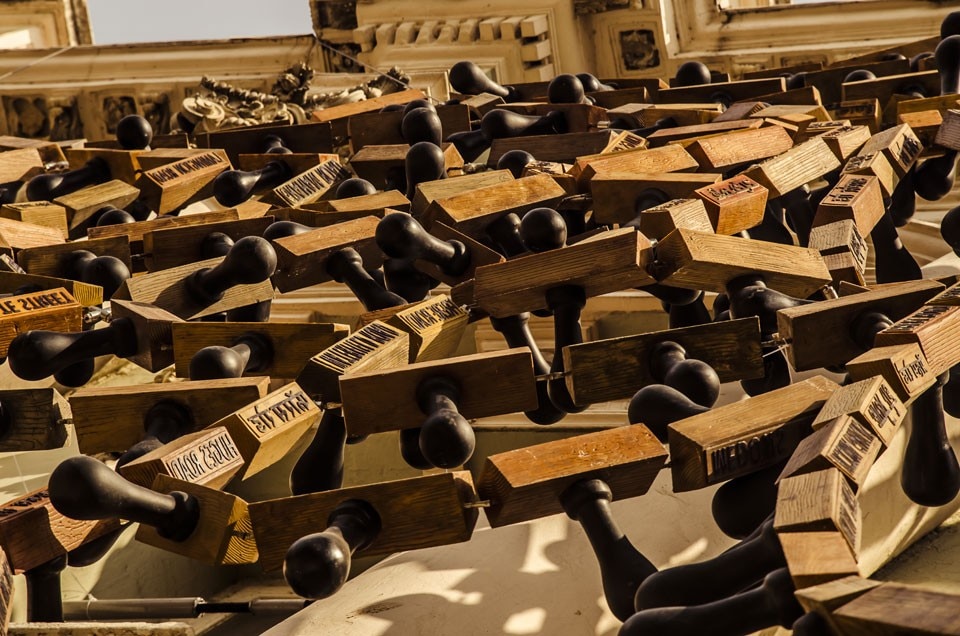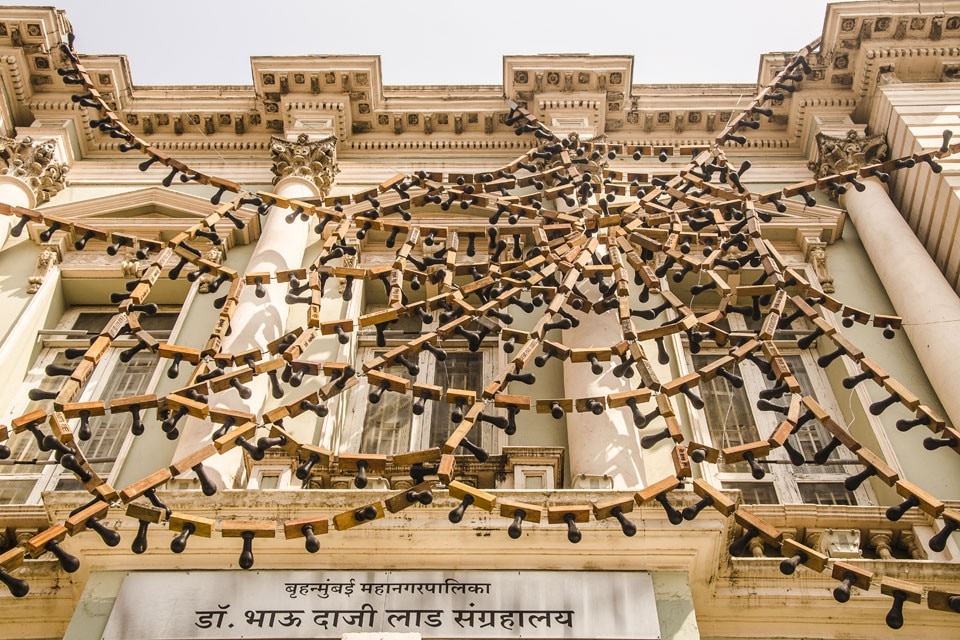Indian artist Reena Kallat’s work renders visible the urban and social fabric as a mosaic of names and lives: sometimes removed from India’s history, records and official image; sometimes even from the collective awareness, but still a strong presence, a magmatic force subtending the reality of all places at all times. In her works, Kallat lends form to the weave of countless stories that lie behind the city and she does so using a symbolic object — the rubber stamp, the main tool of bureaucracy.
She has created painted portraits on paper with the names of people denied visas because of their class, nationality or religion. Facial contours are formed with rubber stamps naming people officially registered as disappeared. Other works depict monuments in Delhi and, again, the images look segmented, as if pixelated. These feature the names of sites placed under the protection of the Indian archaeological heritage service, but gobbled up by urban growth and speculative building.

Originally from New Delhi, Kallat lives in Mumbai. With 20 million inhabitants, Mumbai is India’s most densely populated city and one of the most densely populated in the whole world: a megalopolis where progress and backwardness, wealth and poverty are squeezed together and live in each other’s pockets. Here, every metre of the ground is rendered useful: either paved in asphalt, or serving as somebody’s home, occupied by beds, shelters, makeshift living spaces and tiny and immense shantytowns.
Mumbai is also a rich city that runs on tireless stamina. The chaotic megalopolis has grown up over the old city forged by the colonisation — first Portuguese, then British — of a marshy area that became a precious port and was turned into a dynamic manufacturing zone, drawing massive immigration and an influx of different ethnic groups, religions and cultures from all over India and the neighbouring countries. With the growth of this ambitious, dramatic and hugely paradoxical city came the development of a complex bureaucracy that was expected to regulate, order and settle, but that is one of the most problematic in Asia.


To those interested in urban dynamics and “public” projects, Kallat’s work offers much food for thought — does art make sense in such a mobile and contradictory place as Mumbai? Is there space for an art project in an urban fabric that is dense to the point of saturation?
Ultimately, urban fabric is commonly and fundamentally considered public space, and as such it can be lived, used and regulated. Where does the limit lie between public and private, interior and exterior, order and disorder, organisation and entropy? What becomes the meaning of public space when its definition broadens? To what degree can its physical appearance and use be designed? Who should or can do it, and how?


